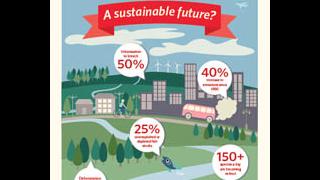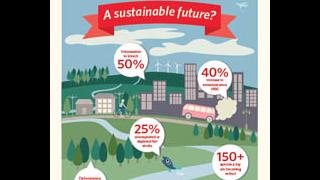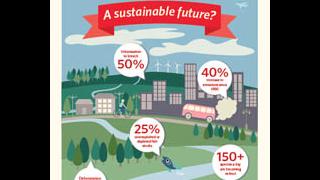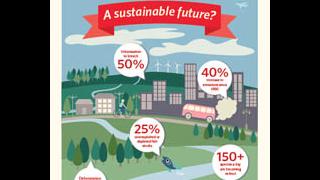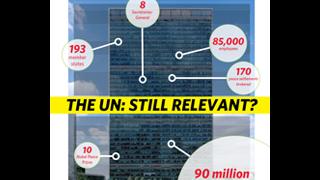
Urban migration means we must rethink rurally focussed approaches to development
By the end of this decade the majority of the world's population will live in cities. The most dramatic urban migration is taking place in emerging market and developing countries.
Latin America and the Caribbean has the highest rate of urbanisation: the population living in cities almost doubled between 1950 (41%) and 2010 (80%). Eastern Africa, currently the world's least urbanised region, with some threequarters of its people living in rural areas, is expected to reach urban-rural parity by the middle of the century. This global rise has been accompanied by the growth of impoverished peri-urban slums around cities such as Rio de Janeiro, Mexico City, Nairobi and Manila, which is occurring on an unprecedented scale.
Despite these striking trends, our paradigm for development aid tends to remain biased towards the needs of rural village life. We do not have well-developed models for providing development assistance in ways that will be most effective for new or growing cities. Nor have we, as yet, been able to adequately tackle the challenges posed by massive slums. Squalor, disease, unemployment and crime thrive in shanty towns – many of which are home to a million people.
The deficiencies in our approach are manifest in the UN Millennium Development Goals target for slums: to achieve a significant improvement in the lives of at least 100 million slum dwellers by 2020. Arguably, this target has already been met. In the 10 years since the Goals were agreed by the international community, more than 200 million people gained access to improved water, sanitation or housing and the share of urban residents living in developing-country slums declined from 39% to 33%.
But many – including the UN Human Settlements Programme (UN-HABITAT) – have argued that the target was set far too low. In absolute terms, the number of slum dwellers continues to grow and outpace improvements. An estimated 828 million urban residents now live in slum conditions, up from 767 million in 2000. The situation is especially critical in conflict-affected countries, where the proportion of slum dwellers has risen from 64% in 1990 to 77% in 2010. If aid is to have the impact we would like to see in coming years, it is time to rethink our priorities and approaches.
In fact, urbanisation offers opportunities as well as challenges. While major cities in industrialised nations are often burdened by outdated water and sewage systems, and archaic transportation structures and housing, cities in the developing world – especially those in emerging-market countries – have the opportunity to build metropolises created to meet human needs in a modern and efficient way. When well organised, it is far easier to bring services, economic growth and employment to large concentrated numbers of city dwellers than to widely scattered rural populations.
Earlier this year, a symposium on the health of cities was sponsored by Oxford University's Green Templeton College. It brought together 50 health experts, economists, mayors and urban specialists from around the world to find solutions to these challenges. While the meeting focused primarily on emerging-markets countries, many of the conclusions reached could be applied to poorer developing nations.
The most important finding was that urban health issues should not be within the purview of health ministries alone. Transportation, environment, agriculture, urban planning, security, finance and other factors have considerable impact on people's health. It is vital therefore to have a joined-up strategy in which all ministries work together to create healthy living conditions in growing cities. Vertical integration is equally important. National policymaking, including budgetary decisions, needs to be coordinated with key local decision-makers like mayors.
Policymakers should also share innovative solutions to pressing issues like reliable clean water, sanitation and food supplies. Public-private partnerships, rainwater harvesting and urban agriculture projects (where food is grown in setaside land, including backyards, rooftops and window boxes, to reduce largescale transportation) are being actively incorporated into urban planning by countries such as India, Cuba and China.
The UN system is, to varying degrees, leading the way in reshaping how we approach the challenges and opportunities presented by the cities of the future. In its recent "Bridging the Urban Divide" report, UN-HABITAT discusses the evolution of the 'right to the city' as a response to exclusionary development and marginalisation. More concept than legal device (although it has been enshrined in e.g. Brazilian and Ecuadorian law) the right to the city essentially advocates a rights-based approach to urban planning.
Together with the UN Office on Drugs and Crime, UN-HABITAT has also produced a handbook on policing urban space, aimed at low- and middle-income countries. Echoing the Oxford conference findings, one of the publication's key recommendations is for "joined-up government" as the basis for building secure environments.
Bilateral aid agencies, including the UK's Department for International Development, NGOs and funders need to examine their programmes to ensure they are aligned with such recommendations, and with the new directions the UN is suggesting in its focus on urban needs.
Dr Peter G. Bourne is an honorary visiting fellow at Green Templeton College, University of Oxford. He was special assistant for health issues to US President Jimmy Carter before serving as an Assistant Secretary-General at the UN. In this capacity he established and directed the UN Decade on Clean Water and Sanitation, launching the global campaign to eradicate the disease caused by guinea worm, which is now approaching full success.











